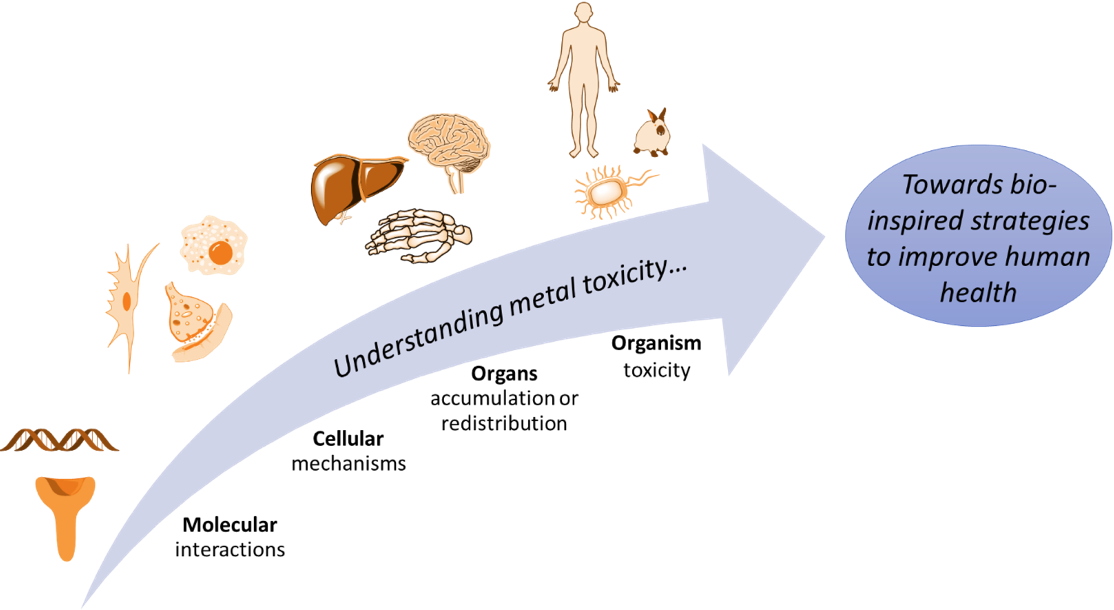Pascale Delangle & Sarah Hostachy
Metals constitute the vast majority of the elements of the periodic table. Some play essential roles in biology, acting as signals or enzyme cofactors important for cell metabolism, signalling, and response to oxidative stress. Other, although they do not play a known role in biology, are present in environment and can interfere with biological functions.
Unlike organic compounds, metals can be neither produced nor destroyed under normal biological conditions. To keep their metal balance, living organisms have thus developed mechanisms to finely control their uptake and export of metals. However, disorders in this cellular machinery (
e.g. genetic mutations) or environmental factors (high metal intake through alimentation, respiration, environmental pollution…) can perturb metal homeostasis and lead to metal overload and toxicity. This is the case for instance in
Wilson’s disease, where genetic mutations in a copper transport protein, ATP7B, cause copper accumulation in liver and brain. This results in
oxidative stress through Fenton chemistry at the cellular level, and in damages and lesions at the organ level.
Industry and technology make extensive use of metals due to their multifarious properties. Living systems are thus exposed to various amounts of exogenous metals, which can perturb normal biological processes through
oxidative stress, perturbation of physiological biomolecules structure and function, or competition with endogenous, essential metals. Metals of the actinide family can in addition cause
radiotoxicity.
The CIBEST team elaborates
chemical models and tools to understand these interactions at the molecular level. This is instrumental to develop bio-inspired strategies to improve human health,
e.g. efficient chelators to
decorporate toxic metals or
metal complexes used as drugs.
